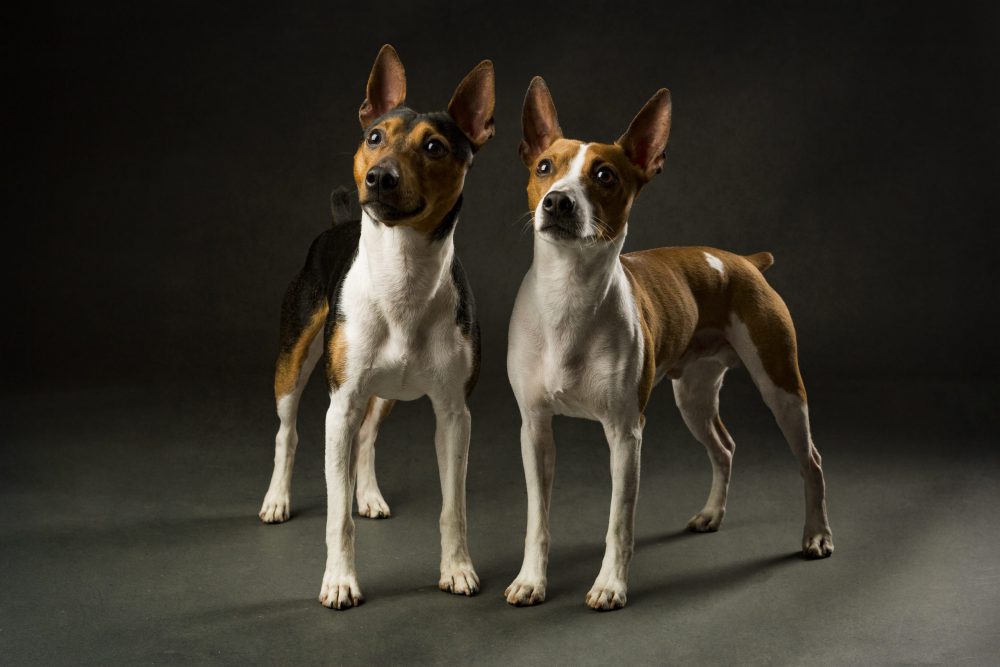
“The Sky is Falling”: Not exactly.
Blog written in conjunction by Natalie Green Tessier and Rebekah Zurbrugg
When it comes to the sustainability of purebred dog breeds, some canine geneticists and even dog breeders make arguments that involve a sort of “the sky is falling” mentality. Given that it is 2020, perhaps we need some good news? The sky is indeed NOT falling for many breeds – in fact, many breeds have quite a lot of biodiversity and have few or no breed specific diseases. Sometimes it can almost be a bit of a disappointment for those who were convinced their breed was in dire straights to find that in fact they are not. Does this mean we can all just relax and shouldn’t safeguard our biodiversity? Of course not. But it does mean there is no need for resounding panic and hysteria over the potential “extinction” of many breeds.
You may ask then, where is the proof? While there have been many examples over the years, however, last week, Dr. Pedersen and UC Davis VGL released the genetic diversity preliminary findings for an open registration breed whose AKC stud books are due to close in a few short years: the Rat Terrier. It was important, therefore, to assess the existing biodiversity of this breed prior to closing the stud books, so the breed community can know without a doubt that they have enough biodiversity to do so (smart!). And what they have found was astounding!
What exactly is biodiversity, simply put – or the variation we are discussing here?
The best explanation I’ve yet read is from BetterBred Founder Natalie, and as a result we will share it again here!
Most breeders think of DNA as coming in two options- a good gene, or a mutant gene – like it is in many DNA tests. In fact, there are many genes or (in the case of the VGL canine diversity test) markers that come in a great many variations – like a t-shirt that is available in different colors. The more variants there are, the more information we have about population genetics. In more inbred breeds, there are fewer variants for each marker. So an inbred breed might have only a few colors available in t-shirts, whereas a diverse breed will have many colors of t-shirts. Apart from the relatively small number of genes that make up specific, predictable, visible breed traits, the rest of the gene pool is generally healthier when there’s lots of variation.
Unfortunately when breeders select too strictly for too long for very specific traits, there can be an unintended loss of variation in the parts of the DNA that are more beneficial when they have more variation. A good way to assess whether that good variation has been impacted is using markers like those used in the VGL canine diversity test. Because they are considered neutral – or not associated with any specific known trait – they are great for assessing genetic diversity. In breeds with ample diversity, there will be lots of variations for each marker (lots of colors in the t-shirt drawer.)
But what if you have a breed without much variation? Well, this happens, and can happen quite often. In this case the best thing breeders can do is try to make sure the variants that are in the breed are well distributed – so there are plenty of all of them in the breed. Imagine a t-shirt drawer with lots and lots of red t-shirts and only one blue one and one green one. If you lose one of the red ones, it doesn’t change much about the t-shirt drawer – there are lots of other red ones. But if you lose either the blue or green one, the variation is seriously diminished. If, on the other hand a third of the shirts are red, and a third are green and a third are blue, then it’s a lot harder to lose the existing variation in the drawer, even if you lose one once in a while and even though there are only 3 colors.
Genetic diversity in the Rat Terrier: what have they found at UC Davis?
The Rat Terrier breed, with ONLY 34 unrelated pedigreed dogs tested, was found to have captured or maintained quite a lot of biodiversity in comparison to many other breeds. The benefit of having carefully analyzed 35 different breeds of all different sizes, shapes, origins and purposes is that we now have a vast body of knowledge with which to compare each unique breed. When we assess a relatively new distinct breed like the Rat Terrier, we can put them into the context of all the other breeds – inbred ones, highly diverse ones, old and new ones.
First, let’s review some key quotes from the recently released preliminary findings:
(T)he 34 Rat Terrier had an average of 7.67 alleles/locus (Na). This is much higher than for the Shiloh Shepherd (Na=4.0), Lakeland Terrier (Na=4.24), Swedish Vallhund (Na=4.91) and Irish Red and White Setter (Na=5.09), Llewellin Setter (Na=5.94) and Flat-coated Retriever (Na=5.94), slightly higher than the Labrador Retriever (Na=7.33), and somewhat lower than the Golden Retriever (Na=8.39) and Miniature Poodle (Na=8.91). However, the average number of alleles is less important than the number of alleles that have the greatest genetic influence on heterozygosity, a figure known as average effective alleles/loci or Ne. Ne in this group of dogs averaged 4.56 effective alleles per locus. Therefore, an average of 4.56 alleles at each locus contribute to most of the heterozygosity within the breed.
Dr. Pedersen 2020
In the above paragraph, we see that not only do the Rat Terriers thus far tested have a lot of genetic variability overall as a breed (Na) but also we see that a high percentage of that variation is contributing to the gene pool – or as stated, contributing to heterozygosity (Ne). Having such a large portion of the Ne contributing to the gene pool has, in our observation, indicated a better chance for the long term health a viability and low rate of breed specific disease. Dr. Pedersen always assesses a breed several different ways to form a fuller picture of the state of genetic diversity in the population, and in Rat Terrier there were other findings that also indicate there is ample genetic diversity existent in the breed.
The IRVD curve for the Rat Terriers was nearly superimposed on the IR curve (Fig. 3). This figure is close to the 64.7% of retained canid genetic diversity calculated from comparison with a somewhat different population, i.e., all canids ever tested at the VGL (Tables 1, 2). This level of retained village dog genetics was even higher than the about 60% retained diversity observed in the Miniature/Toy Poodle or 54% in Labrador Retriever, and much higher than the 23% for Irish Wolfhound, 15% in Doberman Pinschers and 7% in Swedish Vallhund. This would place the Rat Terrier as the breed most similar to village dogs as tested by the VGL to date.
Dr. Pedersen 2020
This above discussion centers around one of Dr. Pedersen’s most well known assessment methods, which essentially tests the inbreeding and retained diversity in a breed by comparing it to the “ideal” population of randomly breeding village dogs from around the world. In this example, they found that the Rat Terriers thus far tested have maintained the most of that original genetic variation of any breed yet tested. In other words, this breed’s genetic diversity is in excellent shape.
As a reminder, the kind of genetic diversity tested by the UC Davis canine genetic diversity test is not related to type or visible traits. Breeders want dogs that look very similar and function similarly, but are also healthy. In order to get dogs what are consistent in form and function from one generation to the next, we naturally limit diversity in the very few genes that control visible traits. However, these are just a tiny fraction of the genome, and populations tend to be healthiest when the rest of the genome has ample variation. Thus traditional breeding is always doing two conflicting things at the same time – selecting for breed type means selecting the same genes in specific areas of genome and selecting for health means selecting more variation across the genome. That’s why extreme inbreeding can create very beautiful dogs, but often, though not always, can also increase risk for disease.
This is why the UC Davis test assesses only markers that have been confirmed not to be linked to traits (color, size, coat type) or disease. By using these “putatively neutral” areas of the DNA, we can best understand dynamics like kinship, population structure or genetic diversity loss. Adaptive areas of the DNA, the ones that are selected for by either nature or mankind because they offer some benefit, tend to be more similar from animal to animal within a population, and so they offer different information.
Another area considered possibly adaptive is the DLA – “dog leukocyte antigen” which is the area of the genome that controls the immune system. The UC Davis genetic diversity test identifies more regions than any commercial testing company’s test, and it is the only one to offer specific identification of the haplotypes, or linked sets of DNA, that are found there. Being able to identify those haplotypes specifically offers researchers new lines of inquiry, allows breeders to maintain their diversity better, and helps us understand more about the breed. The number of different haplotypes and how common each is within the breed can tell us something about the history of that breed, whether there were many founders or just a few, and with which other breeds it shares distant ancestors.
So what did they find when they analyzed these regions in the Rat Terrier?
The 34 Rat Terrier in this study possessed 26 DLA class I and 22 DLA class II haplotypes (Table 5). Five class I (1252-1258) were unique to the breed and the rest shared with several other breeds (Table 5). All class II haplotypes have been recognized in other breeds (Table 6). No class I or II haplotype was dominant in the breed, different from many other breeds. The large number of DLA haplotypes indicates that the breed has evolved from a relatively large and diverse founder population and no single founder line dominated the breed.
Dr. Pedersen 2020
The number of DLA class I and II haplotypes found in these 34 Rat Terriers was above average compared to many other breeds studied to date. The numbers of DLA class I and II haplotypes (26, 22) haplotypes found in Rat Terriers were higher than the Swedish Vallhund (6, 4), Shiloh Shepherd (7, 6), Giant Schnauzer (14, 15), Samoyed (13, 12) and Shiba Inu (16, 15); similar to the Golden Retriever (26, 23), and lower than the Miniature Poodle (33, 23). It is possible that more haplotypes will be identified as more dogs are tested, but the numbers and incidences are likely to be low.
This breed, with only 34 unrelated Rat Terriers tested, has nearly as many DLA haplotypes as a breed with over 700 dogs (the Golden Retriever) tested. This is yet another indication that the Rat Terrier breed enjoys great levels of biodiversity.
Such ample biodiversity affords the breed community much opportunity to select for type, structure, temperament, and drive when making breeding decisions, and still maintain that biodiversity once the stud books close. We often hear breeder proclaim the loss of one trait or another in their breed over generations – and sometimes they will say “the fronts are gone,” or “the breed is too extreme.” When a breed retains more genetic diversity, it is nearly always possible to breed back to a more moderate form.
As much as ample genetic diversity is a huge benefit to a breed, it’s important to remember that diverse breeds do not see an absence of disease – rather they have low rates of disease, and no specifically common diseases breed wide. This does not negate the probability that specific diseases might crop up in singular lines of Rat Terriers, and are more likely in heavily linebred litters since inbreeding will often expose unknown recessive genetic disease.
Additionally, individuals in a breed may have health issues associated with more general aspects of the breed. Rat Terriers remain susceptible to some problems that all small breeds have, like patellar luxation, or dental issues, but these are usually more complex mechanical issues related to breeding for smaller and smaller dogs. The breed as a whole, however, has to date no known breed specific diseases, which are characterized by being a higher risk for all dogs within the breed than in other breeds. Should any disease or undesirable trait crop up in a line of Rat Terriers, breeders will have ample opportunities to breed away from that trait while still selecting for breed type, because there will be potential complementary mates that are of good quality but are are not genetically similar.
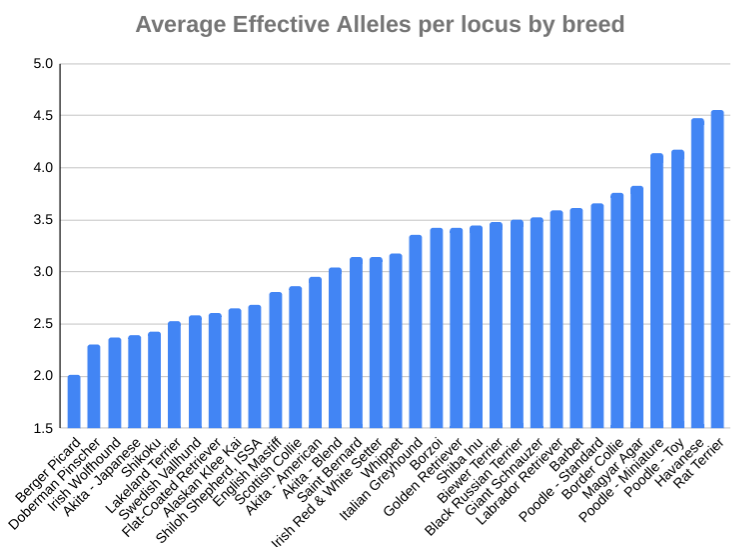
What about other breeds?
Sometimes we hear people say that once a studbook is closed, every breed is then in trouble. Just because many breeds closed their stud books long ago, it does not mean that they are all in bad shape, just as it’s not true that all new breeds still have lots of diversity. It’s tempting to suspect that breeds whose stud books have long been closed will be teetering towards disaster, regardless of the general health and longevity that they may experience. In careful analyses of individual breeds, however, many have been found to have few breed specific diseases, and ample biodiversity within their gene pools.
Some examples of breeds that enjoy similar levels of overall biodiversity as the Rat Terrier (Na discussed above) AND also are effectively using it include the Toy Poodle, which as of publication has Na = 8.76, Ne = 4.17, the Miniature Poodle, which as of publication has Na = 8.55, Ne = 4.14, and the Havanese, which as of publication has Na = 9.21, Ne = 4.48.
Then, there are breeds which have found a lot of genetic variation breed-wide, but are using very little of that variation as a breed. These breeds are the Standard Poodle, which as of publication has Na = 10, Ne = 3.66, and the Doberman Pinscher, which as of publication has Na = 7.67, Ne = 2.31. The Standard Poodle suffers from many breed specific diseases, including sebaceous adenitis, Addison’s disease, which are thought to be fixed or nearly fixed in the majority of Standard Poodles, and has many diseases with increasing frequency like IMTP, AIHA, epilepsy, etc. The Doberman suffers from dilated cardiomyopathy (DCM has recently been potentially linked to autoimmunity), bloat, some neurological and autoimmune diseases, and from various cancers. The Golden Retriever additionally suffers widely from cancers and has many line-specific disease. That breed has an Na of 8.39, while only having an Ne of 3.42.
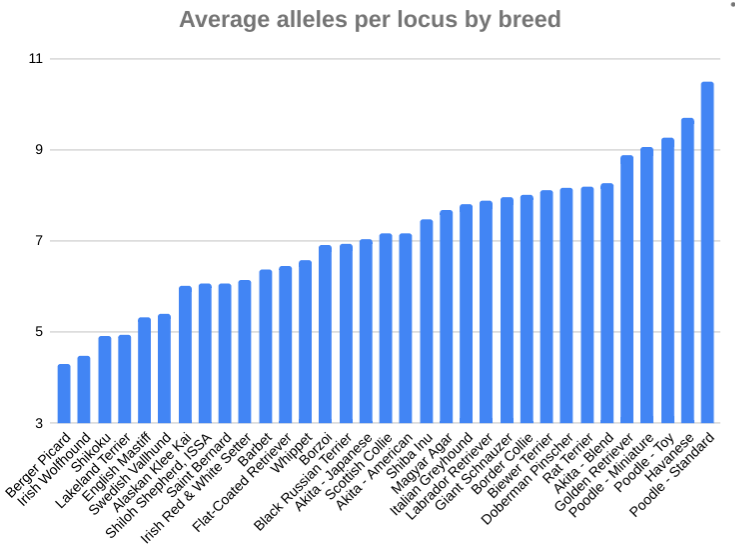
Many breeds have less genetic variation than the breeds discussed above, however, they are effectively using more of their genetic variation (Ne) and find themselves in better health than those who are using very little. One surprise has been the Berger Picard, which has so far been found to have an average alleles per locus of only 3.79, and has an effective alleles per locus of only 2.01. Yet, surprisingly this breed seems to enjoy decent health and lifespan, despite its limited biodiversity. In cases like these, breeders can only work to maintain the genetic variation that they have while they select for health. If at any point the breed has a marked increase in breed specific disease, the breed community may want to consider outcrossing to a similar breed from the same geographical origin to increase diversity without any drastic change to the breed.
Conclusion:
The sky is not falling for many breeds. While it can be tempting to look at pedigrees and see that there are potential bottlenecks in a breed due to popular sires or loss of breed numbers, we really should not make judgment calls on the existing biodiversity of breeds without a genetic assessment. We can often be surprised, pleasantly or unpleasantly. It’s important to assess each breed individually, taking a look at both the overall biodiversity of a breed, and how well the breed community is utilizing and maintaining existing diversity. Even in the face of low biodiversity, if a breed enjoys relatively good longevity and health, then all the safe-guarders of a breed must do is preserve that existing diversity to prevent the rise of breed specific disease. Breeders control the future of their breeds. Using genetic diversity testing and implementing it for breed management can help in the retention and utilization of their breed’s biodiversity.
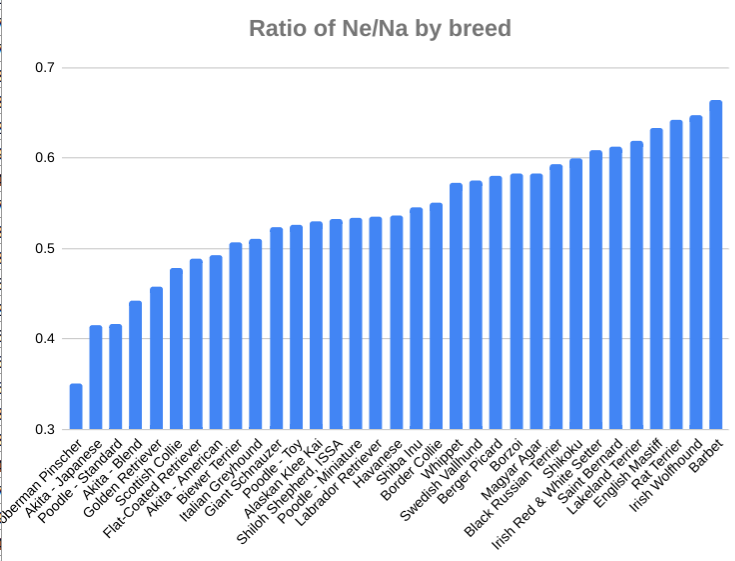
The sky is not falling. Not always at least.
Ready to test your dogs and become a part of the growing breed conservator community? Create an account, learn about breed management with our mini course, and order your test today!
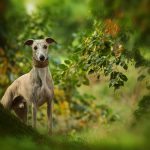 Previous Post
Previous Post Next Post
Next Post


